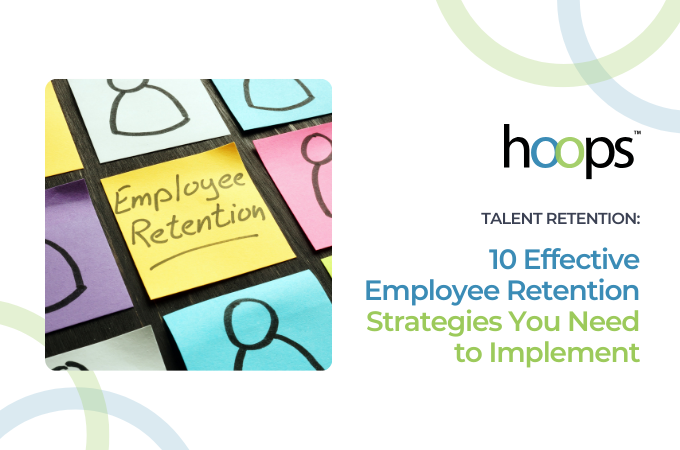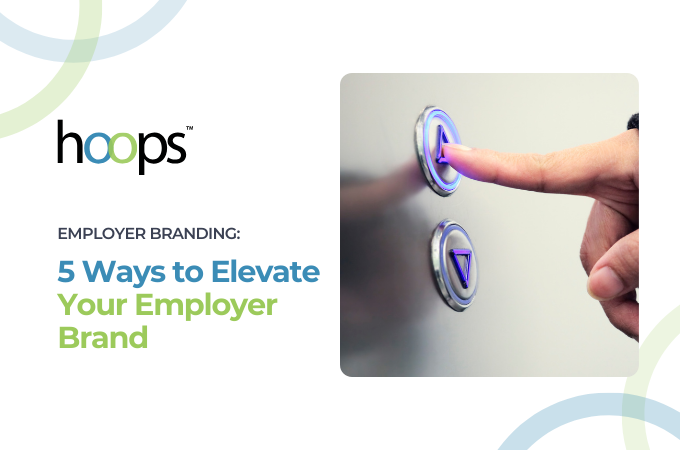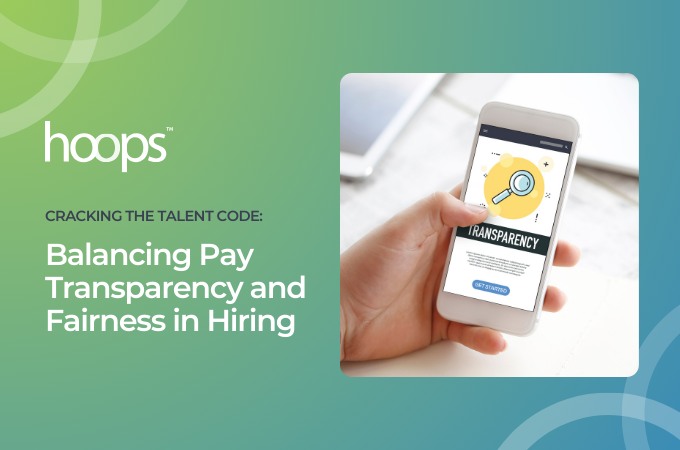When it comes to talent retention, companies are constantly searching for the secret sauce. It’s easy to assume that competitive pay is enough, but the reality is that there are several other factors at play. As the job market continues to evolve and employees seek companies that align with their values, companies must implement effective strategies to keep top talent engaged and loyal.
In this blog, we’ll dive into 10 effective employee retention strategies that will not only help keep your best people but also foster a thriving work environment that employees will want to stick around for. Let’s get started with actionable, real-world solutions you can start implementing today.
1. Competitive Compensation & Creative Pay Structures
Let’s be honest: competitive compensation will always be a priority. However, the way compensation is structured can make a big difference in retention. Gone are the days when employees only cared about their salary. Today, companies are getting creative with their compensation models to make themselves more appealing.
What You Can Do:
- Offer bonuses for meeting goals or exceeding performance targets.
- Implement profit-sharing plans where employees benefit directly from the company's success.
- Provide equity or stock options for long-term retention.
- Consider offering annual raises or cost-of-living adjustments to stay competitive.
Why It Works: Competitive compensation ensures employees feel valued for their work and keeps them motivated to stay engaged. A clear link between company success and personal gain strengthens loyalty.
2. Remote/Hybrid Work Flexibility
Work-life balance is no longer a luxury; it’s a must. Offering remote or hybrid work options is a game-changer for employee retention. The pandemic showed employees how much flexibility can enhance their productivity and happiness. With the ability to control their work environment, many employees now expect to work from home, at least part of the time.
What You Can Do:
- Implement a flexible work-from-home policy or hybrid schedule (e.g., in-office two days a week, remote three days).
- Invest in remote work tools and ensure employees have access to the technology they need to do their jobs effectively.
Why It Works: Flexibility shows employees you trust them, fostering a sense of autonomy and satisfaction. Plus, it’s a win-win for work-life balance (not having to commute) and retention.
3. Job Stability & Clear Career Paths
One of the top reasons employees leave is uncertainty about their future with the company. Offering job stability and clear career development paths can go a long way in helping employees feel secure and committed to their role.
What You Can Do:
- Be transparent about the company’s financial health and future goals.
- Create clear career development plans with well-defined growth paths.
- Offer mentorship programs that allow employees to learn from senior leaders or colleagues.
Why It Works: When employees can clearly see a future within your company, they’re more likely to stay. A stable environment and growth opportunities make them feel secure and valued.
4. Meaningful Perks
Perks like a 401(k) plan with a match and childcare options (or reimbursement) are critical for retention, especially as employees begin thinking long-term. These benefits show that you’re not just thinking about your employees’ present but also investing in their future.
What You Can Do:
- Offer financial incentives like a 401(k) match or other retirement plans.
- Understand your employee demographic and the benefits they value most—such as pet insurance, childcare assistance, paid paternity leave, and more—and explore how you can better meet these needs.
Why It Works: These benefits create a sense of financial security and work-life integration, encouraging employees to stay long-term and ensuring they feel supported both in their career and personal life.
5. Supportive, Empathetic Leadership (Yes, This Is Critical)
The truth is, employees don’t leave companies—they leave managers. If your managers aren’t trained to lead with respect, empathy, and clear communication, it can lead to frustrated employees who feel undervalued or unappreciated.
What You Can Do:
- Provide leadership training for all managers to foster a culture of respect and emotional intelligence.
- Encourage open communication, where employees can share feedback and feel heard.
- Foster a supportive environment where managers guide employees toward success, rather than just overseeing their performance.
- Don’t hold on to toxic or ineffective managers, regardless of their performance. Learn more about the true cost of bad managers in our blog.
Why It Works: A manager who genuinely supports and values their team can drastically reduce turnover. Employees are much more likely to stay when they feel their manager invests in their growth and well-being. (P.S. Learn more about the surprising cost of turnover in our blog.)
6. Align Your Culture with Your Values (and Don’t Just Say It—Live It)
A strong company culture isn’t built on what you say—it’s built on what you do. Employees want to work for companies that align with their values, and if your company culture doesn’t reflect what you stand for, they’ll find a place that does.
What You Can Do:
- Clearly define your company’s core values and mission.
- Foster a culture that celebrates inclusivity, collaboration, and accountability.
- Offer team-building activities that reinforce your culture, like out-of-office volunteer days, family days, or social events.
Why It Works: When employees feel connected to the values your company represents, they’re more likely to stay. A values-driven culture creates loyalty and boosts morale.
7. Solid Onboarding and Training Plans
The onboarding process should set employees up for success from day one. An effective onboarding program can help employees feel connected, confident, and clear about their role in the company.
What You Can Do:
- Create a structured onboarding process that includes training, mentorship, and check-ins with managers.
- Provide ongoing training opportunities for employees to develop new skills and grow their expertise.
Why It Works: Proper onboarding and continuous learning show employees that you are committed to their growth, leading to higher engagement and lower turnover.
8. Recognition and Rewards (It Doesn’t Have to Be Big)
Even the smallest gestures of appreciation can go a long way. Recognition doesn’t have to be a huge bonus or extravagant gift—it can be a simple thank-you or acknowledgment of a job well done.
What You Can Do:
- Implement a recognition program where employees can nominate each other for awards.
- Provide meaningful rewards (even small) like handwritten notes, gift cards, or extra time off for employees who exceed expectations (however paid bonuses are the best if you can swing it!).
Why It Works: Recognition makes employees feel valued, and when employees feel appreciated, they’re much more likely to stay. Recognition, even when small, strengthens the bond between employees and the company.
9. Opportunities for Growth (Even if It’s Lateral)
While upward movement is always desirable, lateral growth opportunities should not be overlooked. Sometimes employees need a change in responsibility or a new challenge to stay engaged. The ability to move laterally can keep things exciting and prevent stagnation.
What You Can Do:
- Encourage upward and lateral moves or cross-departmental projects to give employees new challenges.
- Offer job rotations or stretch assignments that allow employees to explore new roles without changing positions permanently.
Why It Works: Lateral growth opportunities keep employees engaged by offering new challenges and the chance to learn, without the stress of constantly needing to “climb the ladder.”
10. Work-Life Balance and Flexibility
It's not surprising work-life balance is a top priority for today’s employees. They want to be productive but also have time for their personal lives and families. Offering flexibility helps retain employees who might otherwise leave for a job that respects their time outside of work.
What You Can Do:
- Provide flexible hours and the option for remote or hybrid work.
- Offer extra floating personal holidays or support programs like employee assistance plans.
- Encourage employees to disconnect after hours, preventing burnout.
Why It Works: Flexibility and work-life balance aren’t just essential for keeping employees happy, healthy, and engaged—they directly impact performance. After all, when employees feel their best, they perform their best.
Conclusion: Retention Starts with People
Employee retention is about much more than competitive compensation—it’s about creating a culture that values people, their work, and their well-being. By implementing the strategies above, you can create an environment where employees feel engaged, supported, and motivated to stay.
Ready to reduce turnover and build a loyal workforce? Contact Hoops today to explore how we can help streamline your employee engagement strategies and improve talent retention through custom solutions like AI-powered employee feedback, automated onboarding programs, and leadership development.
Simplify talent strategy. Amplify growth. Visit hoopshr.com or call 877-262-7358 to get started!
#yourbesthire







